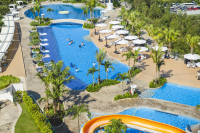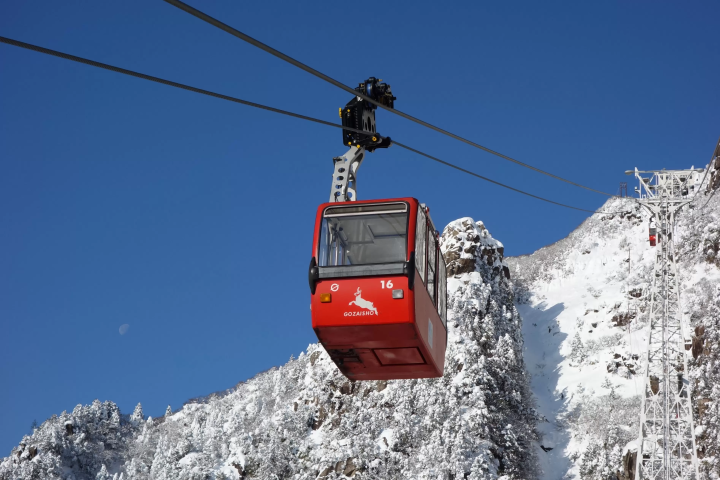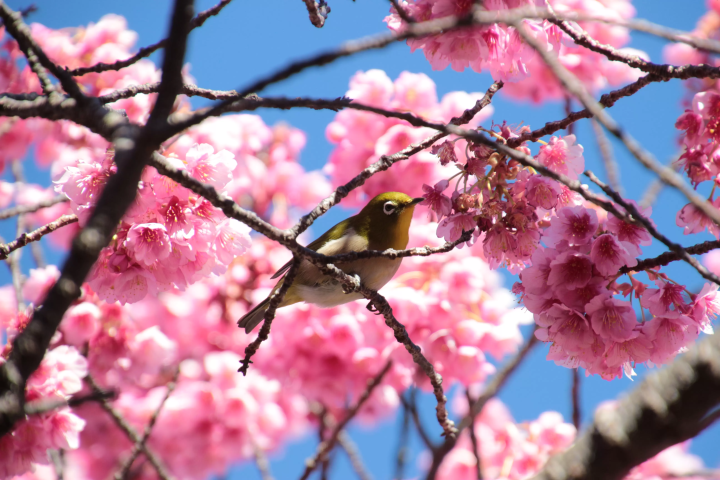Made from 100% natural flowers, this hotel's original honey is packed with the bounty of Yambaru.

Mr. Miura, a beekeeper of "Okinawa Bee Happy," who produces the "Yagaji Island Honey" served at the Club Lounge of the Oriental Hotel Okinawa Resort & Spa, practices beekeeping with the goal of "how to keep the bees stress-free."
ORIENTAL HOTEL OKINAWA RESORT & SPA in Nago City, Okinawa, welcomes you to a comfortable hotel that offers a unique stay experience through a wide range of accommodation plans and activities that guests can choose from to suit various occasions and needs.
"Oriental Hotel Okinawa Resort & Spa" is recommended as a base for sightseeing in Okinawa

Oriental Hotel Okinawa Resort & Spa completed a three-year comprehensive renovation in April 2024.
The hotel's pool and spa are of course attractive, but it is also a comfortable hotel for all ages, with beds available for co-sleeping, a kids' space and pool, and universal rooms. It is also easily accessible to Junglia Okinawa, which is opening in the north of Okinawa, and Yambaru National Park, making it an easy base for sightseeing in Okinawa, so please use it when you are sightseeing in Okinawa.

As a hotel located in the northern part of Okinawa Prefecture, we have a passion to collaborate with local people in order to communicate the deep richness and charm of the Yambaru area. With this as our motivation, in 2022 we started with a beekeeping business on Yagaji Island, a small island that is part of Nago City. We asked Daiki Miura, a bee farmer and owner of Okinawa Bee Happy, to work together with us. Mr. Miura is someone who not only knows about the flowers that grow naturally in Yagaji Island and about making honey, he seems to know everything there is to know about all the richness and goodness of Yambaru. Both Mr. Miura and Oriental Hotel Okinawa participate in a group called Yanbaru Harusa Project which is a partnership of farmers, restaurants, lodging facilities, and processing companies working together to promote regional revitalization particularly as it relates to food grown and raised in Yambaru.
Many people have high praise for Mr. Miura’s honey saying, “It tastes like the actual nectar of the flowers.” How is it possible to create honey with such a rich flavor and aroma of the flower nectar? We had to visit a beekeeping site to find out the secret.

-
Table of Contents
- The Best in Okinawa. Nago, a Great Place for Honeybees
- Keeping Bees Stress-Free
- Not To Be Missed—the Most Fragrant & Flavorful Harvest
- Gifts From Bees Not Just Honeys
The Best in Okinawa. Nago, a Great Place for Honeybees
Bees gather where a wide variety of flowers bloom throughout the year.
It’s an early spring day and the blue sky is dazzling. In the garden area of CALiN, a café on Yagaji Island, the bees are busily buzzing back and forth and all around two beehives. “Honeybees are in a good mood when the weather is nice,” Daiki Miura, the beekeeper, told us. Surprisingly, it seems that even honeybees have good and bad moods. Mr. Miura began beekeeping on Yagaji Island about 10 years ago. He installed two beehives here at CALiN where he takes care of the bees and hives that are supported by our hotel.
“When the weather is sunny the honeybees are more active among the flowers because the nectar accumulates in the flowers. This condition is called a ‘good mood.’ If the weather is rainy, the nectar flows out of the flower and there is little food for them to gather. This would be a ‘bad mood’ for them.” If the bees are not moving around, they won’t be collecting nectar resulting in a reduced honey yield. If it depends on the weather like this, I wonder if Okinawa, which has many typhoons, is really a suitable place for honeybees…
“It’s true that the honeybees cannot move around when there are many typhoons, so the amount of honey harvested will be greatly reduced and the impact may last awhile following a typhoon. But Nago is an advantageous location for beekeeping,” Mr. Miura explains as he points to all the flowers blooming around the hives.
“Honeybees cease their activity when the temperature drops below 15 degrees Celsius, but in the warm climate of Okinawa, they can be busy all year round. In addition, the flowers which provide the nectar are in bloom all year round making it the perfect environment for honeybees. Nago, where Yagaji Island is located, is a place with hills close to populated areas as well as hills with uncultivated forest areas. And so a wide variety of flowers bloom in every season. For this reason, beekeeping has become very popular and the concentration of beehives here is the highest in Japan.”
Yagaji Island is home to an abundance of wildflowers such as Burr Marigolds and Melaleuca (myrtle family) that grow naturally throughout the year. And so the honey made by the bees from the nectar of 100% natural wildflowers will have the rich fragrance of those flowers.




Keeping Bees Stress-Free
Hive placement and number, and beekeeping methods: Making high-quality honey with originality
In addition to relying on the geographical advantages of Yagaji Island, Mr. Miura devotes himself to using his own ingenuity for making high-quality honey. Many of his ideas involve the theme of keeping honeybees in a stress-free state. And this has to do with the method of beekeeping.
There are two main types of beekeeping: migratory and stationary. Migratory beekeeping means that beekeepers take their honeybees with them and keep moving them from place to place in search of seasonal flowers. Stationary means keeping the apiary in one place where honeybees can collect nectar from various flowers in the area. Mr. Miura says that stationary beekeeping is less stressful for the bees.
“It is said that the activity range of honeybees is a radius of about 1 kilometer. With stationary beekeeping, the range expands giving access to a greater variety of flowers. I think it’s because it doesn’t put a burden on the bees and it contributes to their good health.” With the bees energetic activity of collecting nectar from such a variety of flowers, the flavor and aroma of the honey becomes more complex and rich.
Mr. Miura also pays careful attention to the number and location of the hives
“If there are too many beehives within the limited range of the honeybees, that area will become saturated with bees and the amount of nectar that can be collected per hive becomes insufficient. So we make sure to disperse installation locations around Yagaji Island.”
In Japan, apiaries often set up dozens of hives in a concentrated location and artificially feed the honeybees with sugar water and other foods to make up for the lack of real nectar. Although it seems to be an efficient method, it is not hard to imagine that it affects the quality of taste. Contrarily, in order to produce a more delicious and natural taste, Mr. Miura persists in allowing the honeybees access to the nectar of wild grown flowers only. He spares no effort in taking care of the bees and hives and making sure the hives are placed in the best locations for making the best honey.



Not To Be Missed—the Most Fragrant & Flavorful Harvest
Aiming for greater achievements with the support of local chefs
When honey is made with such ingenuity and a lot of love, the timing for the harvest also becomes extremely important. The optimum time for harvesting is said to be 78 to 80 degrees when the fragrance is at its peak. If you miss the timing, all your hard work will be in vain. “When to harvest depends on the season and the weather, but my experience has helped me to be able to do it right.”
In addition to Mr. Miura’s tireless efforts, he has been able to further refine the flavor of his honey based on advice from discerning chefs who are business partners. “The higher the demand based on whether the flavor meets expectations, the more motivated I am to produce a better product.” At Oriental Hotel Okinawa, we feel deeply fortunate to be able to promote an original honey created by Mr. Miura’s uncompromising commitment and sincere passion.

Gifts From Bees Not Just Honeys
A teaspoon of honey tells the workings of nature in Yambaru
Honey is not the only thing that comes from keeping honeybees. Royal jelly, propolis, and beeswax all have nutritional value as well as antibacterial properties. Through offering workshops to make beeswax candles or teaching school children about bees and honey, Mr. Miura actively shares the magic of honey, the ecology of honeybees, the beauty of Yagaji Island, and the richness of nature in Yambaru.


“Because Yagaji Island is so small, most of the children who grow up here eventually leave. But I want them to remember the charm of their home. If you remember the taste of this honey, you will be reminded of the Yagaji Island beauty in that moment. The memory of the taste will make you proud to be from Yagaji Island. At least, that is what I hope will happen as a result of making honey here.”
The circle of honey is only complete when we understand the connection of the forests, flowers, and insects of Yagaji Island. Our hope is that you will be a part of this magnificent story woven through nature when you taste our honey. This should be one of the real pleasures of a one-of-a-kind trip that we offer as a hotel in Yambaru.
Okinawa Bee Happy
Okinawa Bee Happy is a beekeeping project owned by beekeeper Daiki Miura. Mr. Miura was born in Tokyo and worked as a nature guide before his current project of producing honey made only from flowers in Yambaru, particularly Yagaji Island. In addition to beekeeping, his activities include educational programs for local elementary schools, lectures, and events both inside and outside of Okinawa. His special honey is sold at hotels and cafes in Okinawa.

"Oriental Hotel Okinawa Resort & Spa" is recommended as a base for sightseeing in Okinawa
Oriental Hotel Okinawa Resort & Spa completed a three-year comprehensive renovation in April 2024.
The hotel's pool and spa are of course attractive, but it also has beds for co-sleeping, a kids' space and pool, and universal rooms, so it's a comfortable hotel for guests of all ages. It's also easily accessible to Junglia Okinawa, which is opening in the north of Okinawa, and Yambaru National Park, making it an easy base for sightseeing in Okinawa, so please use it when you're sightseeing in Okinawa.


Hotel Management Japan Co., Ltd. is a hotel management company that operates 24 hotels in Japan (total number of rooms: 7,601). In addition to its own brands, "Oriental Hotel" and "Hotel Oriental Express," the company also manages and operates a variety of hotels, including "Hilton," "Sheraton," and "Hotel Nikko."
The contents on this page may partially contain automatic translation.




























![[Yufuin] From breathtaking views to skin-beautifying hot springs. A variety of day trip hot springs to fully enjoy Yufuin](https://resources.matcha-jp.com/resize/720x2000/2026/01/18-255919.webp)

![[2026] The Matsusaka Lantern Festival will be held to light up the winter night sky!](https://resources.matcha-jp.com/resize/720x2000/2026/01/05-254777.webp)
![[List of Traditional Industry Experiences] Factory tours and craftsmanship experiences in southern Osaka and Wakayama](https://resources.matcha-jp.com/resize/720x2000/2025/11/06-249221.webp)
